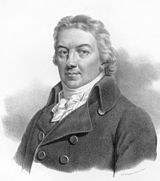History

Prior to the introduction of vaccination with material from cases of cowpox (heterotypic immunisation), smallpox could be prevented by deliberate inoculation of smallpox virus, later referred to as variolation to distinguish it from smallpox vaccination. The earliest hints of the practice of inoculation for smallpox in China come during the 10th century. The Chinese also practiced the oldest documented use of variolation, dating back to the fifteenth century. They implemented a method of "nasal insufflation" administered by blowing powdered smallpox material, usually scabs, up the nostrils. Various insufflation techniques have been recorded throughout the sixteenth and seventeenth centuries within China.:60 Two reports on the Chinese practice of inoculation were received by the Royal Society in London in 1700; one by Dr. Martin Lister who received a report by an employee of the East India Company stationed in China and another by Clopton Havers.
Independently of the East India Company's report, sometime during the late 1760s whilst serving his apprenticeship as a surgeon/apothecary Edward Jenner learned of a story, common in rural areas, that dairy workers would never have the often-fatal or disfiguring disease smallpox, because they had already contracted cowpox, which has a very mild effect in humans. In 1796, Jenner took pus from the hand of a milkmaid with cowpox, scratched it into the arm of an 8-year-old boy, James Phipps, and six weeks later inoculated (variolated) the boy with smallpox, afterwards observing that he did not catch smallpox. Jenner extended his studies and in 1798 reported that his vaccine was safe in children and adults and could be transferred from arm-to-arm reducing reliance on uncertain supplies from infected cows. Since vaccination with cowpox was much safer than smallpox inoculation, the latter, though still widely practiced in England, was banned in 1840.
Following on from Jenner's work, the second generation of vaccines was introduced in the 1880s by Louis Pasteur who developed vaccines for chicken cholera and anthrax, and from the late nineteenth century vaccines were considered a matter of national prestige, and compulsory vaccination laws were passed.
The twentieth century saw the introduction of several successful vaccines, including those against diphtheria, measles, mumps, and rubella. Major achievements included the development of the polio vaccine in the 1950s and the eradication of smallpox during the 1960s and 1970s. Maurice Hilleman was the most prolific of the developers of the vaccines in the twentieth century. As vaccines became more common, many people began taking them for granted. However, vaccines remain elusive for many important diseases, including herpes simplex, malaria, gonorrhea, and HIV.
Vaccines have eliminated naturally occurring smallpox, and nearly eliminated polio, while other diseases, such as typhus, rotavirus, hepatitis A and B and others are well controlled. Conventional vaccines cover a small number of diseases, but are not effective at controlling many other infections.
Generations of vaccines
First generation vaccines are whole-organism vaccines – either live and weakened, or killed forms. Live, attenuated vaccines, such as smallpox and polio vaccines, are able to induce killer T-cell (TC or CTL) responses, helper T-cell (TH) responses and antibody immunity. However, attenuated forms of a pathogen can convert to a dangerous form and may cause disease in immunocompromised vaccine recipients (such as those with AIDS). While killed vaccines do not have this risk, they cannot generate specific killer T cell responses and may not work at all for some diseases.
Second generation vaccines were developed to reduce the risks from live vaccines. These are subunit vaccines, consisting of specific protein antigens (such as tetanus or diphtheria toxoid) or recombinant protein components (such as the hepatitis B surface antigen). They can generate TH and antibody responses, but not killer T cell responses.
DNA vaccines are examples third generation vaccines. In 2016 a DNA vaccine for the Zika virus began testing at the National Institutes of Health. Separately, Inovio Pharmaceuticals and GeneOne Life Science began tests of a different DNA vaccine against Zika in Miami. Manufacturing the vaccines in volume remains unsolved. Clinical trials for DNA vaccines to prevent HIV are underway.
Comments
Post a Comment